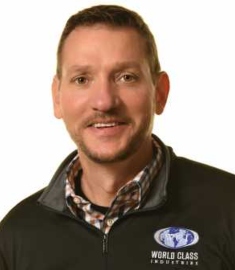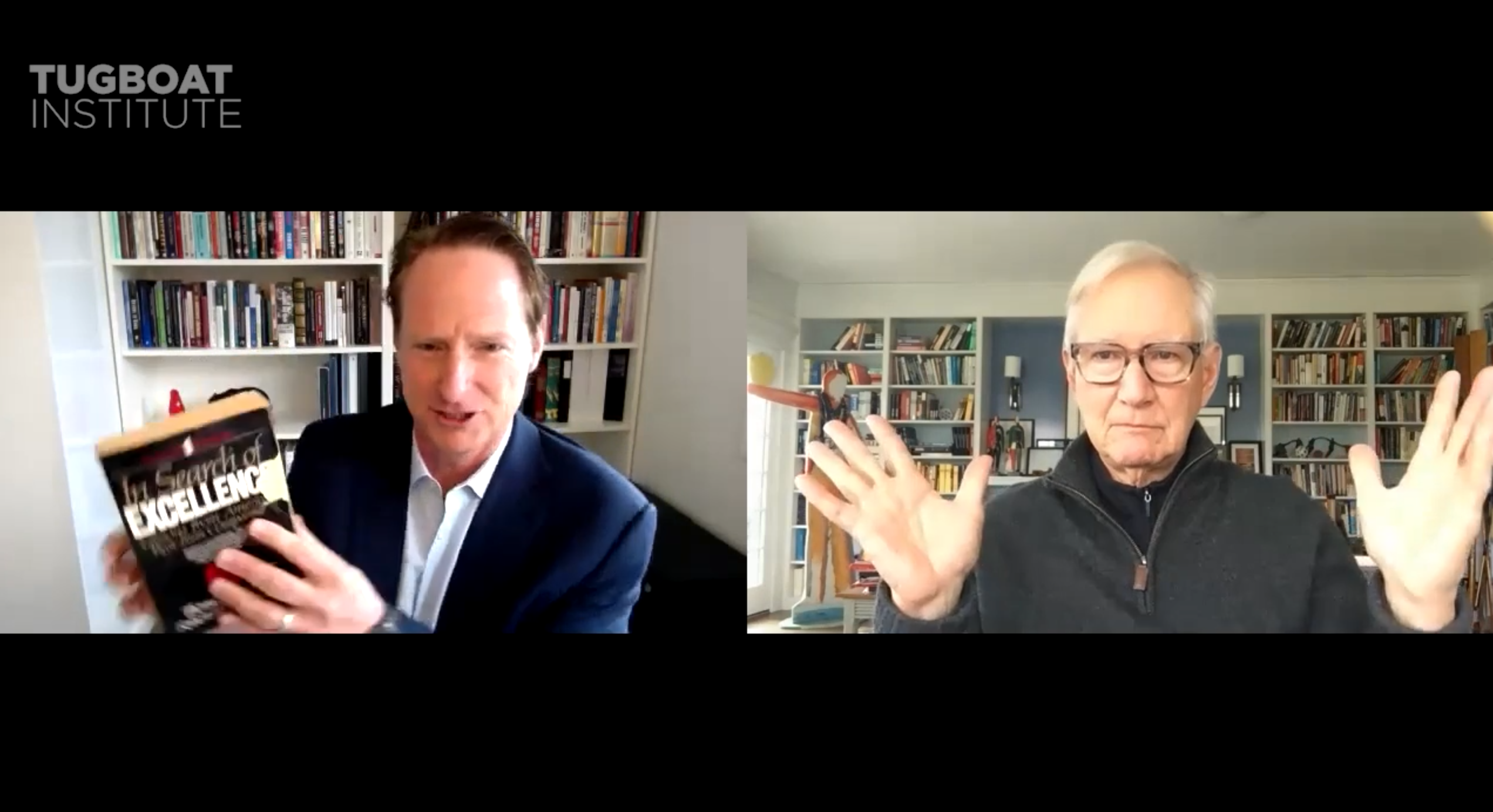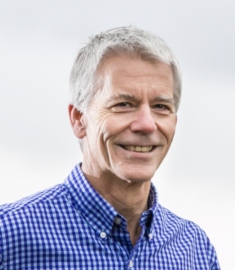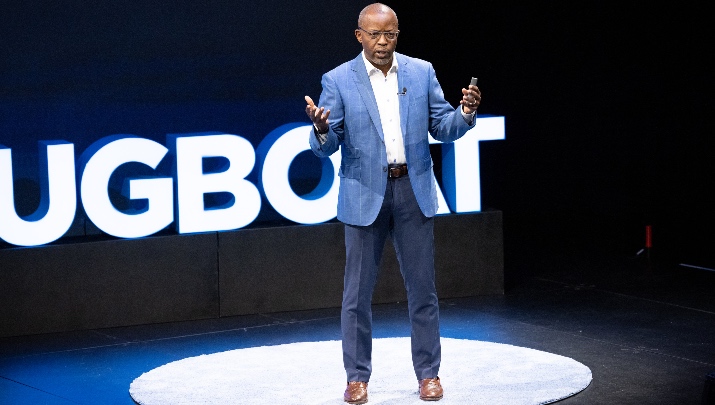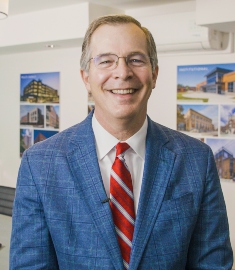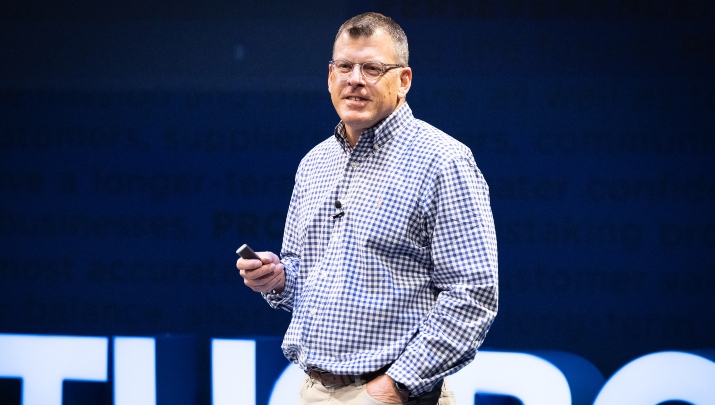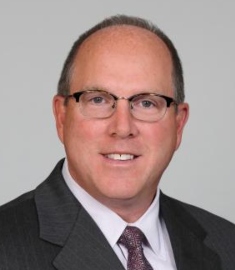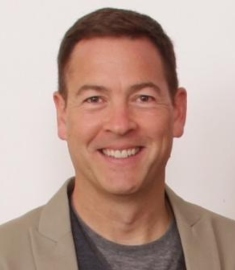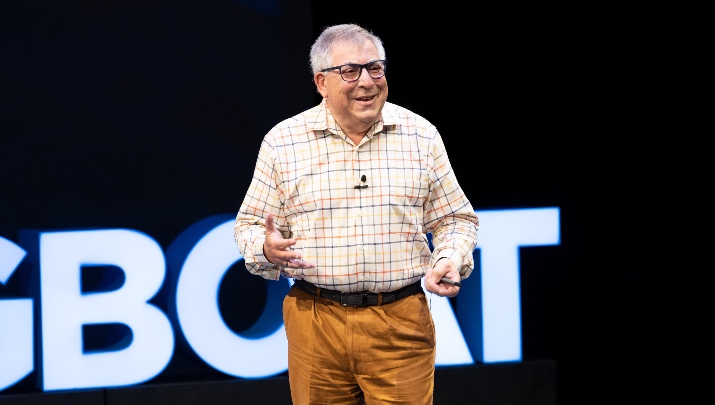Lessons in Leadership I Learned from my Baseball Coach
One of the most effective tools I’ve learned in the many leadership trainings I’ve done over the years is the importance of journaling. Journaling creates the time and space to pause, step back, reflect, and gain insight. Out of the practice of journaling, I’ve come to many important realizations and gained many significant insights. One of them is this; I learned some of my most important lessons in leadership from my high school baseball coach.
I remember one time early in my career, we were in a close game and I got a chance to come in. The bases were loaded with two outs, and I got to pinch hit. I came in and I hit a double in a gap to the fence. I cleared the bases, and I stopped at second base, eyes fixed on my teammate who had started at first base. I held my breath, hoping he would slide into home plate and score. He did! We scored three runs, and I was excited. My coach called time out from where he was coaching at third base, and he called me over
Coach Gene Schultz was never an emotional person, so you never really knew what he was going to say. I got over there, expecting maybe a pat on the back, but he made no comment about the double, didn’t say “good job.” Instead, he asked me, "Where should you be right now?" That was it. I said, "You tell me." To which he replied, "You should be standing right next to me here at third base. You got caught up in the drama and watching the play, but you should be right here." I had failed to follow his most important golden rule: We over Me. My mental percentage dropped.
In the small town in Iowa where I grew up, baseball was it. Everybody played, including me. Our high school was small, but we just happened to have a great baseball team; we won numerous state titles over the years and made a real name for ourselves. We didn’t send a lot of players to play college ball, and we didn’t send any to the Major League that I am aware of, but before, during, and long after my time on the team, we were great. The reason was clear; for 45 years, our team was coached by Gene Schultz. To this day, Coach Schultz is the winningest high school baseball coach in the nation.
Coach Schultz played baseball in college and then came straight to our high school, where he stayed for his whole career. He was not like other high school baseball coaches at the time. Like all the others, he was a fanatic for stats. He kept stats on all the things you would expect: batting average, on base percentage, stealing percentage, balls, strikes, wins, losses, etc. But he spent most of his time tracking different stats, which he called Mental Statistics. They revealed what he considered to be the most important part of the game: where was your head during any given play? If it wasn’t in the right place, you were not contributing your best to your team.
Here are a few examples of things he kept stats on. If you're an outfielder, did you throw the ball to the right place? When you threw it back in, did you hit the cutoff person? Did you throw it to a base? If you're playing center field and the ball is hit to right field, did you go back up your partner, or did you just stay in your space? The list was long. He used them to calculate what he called mental percentages. Ultimately, there's only one right action in every scenario; what percentage of the time did you see it, and did you do it?
As I’ve reflected on the lessons I learned from Coach Schultz back in high school, I can see two main reasons for his great success: attention to detail, and the “we over me” mindset.
The mental stats are a great example of his extreme attention to detail. To help us improve our mental percentage, he relied on repetition. We basically had the same two-hour practice over and over for all the years I played for him. Our focus was always the same: practice plays and then consider; did you have a plan for what you were going to do if the ball was hit here or if it was hit there? Were you thinking ahead instead of reacting in the moment? Were you aware of where people were on base? Our consistent and intense focus on this, over and over, helped us get better and helped us win.
The “we over me” mindset perhaps explains why, despite his incredible number of wins, Coach Schultz did not produce a bunch of great, professional ball players. He wasn’t coaching players, he was coaching teams. On his team, there was no room for ego and no room for individualism.
In business, all of this translates to a mindset as well as specific behaviors. Attention to detail and “we over me” sit at the foundation of both. At World Class Industries, I measure for accountability, but mostly I measure for improvement. There is always learning going on, and the attention to detail helps me capture and apply that learning. As for “we over me,” this takes us right back to Stephen Covey. If you think back to The Seven Habits of Highly Effective People, you will recall that one of them is creating win-win scenarios. If you are winning because someone else is losing, or if you’re looking good because somebody else is looking bad, that is not a sustainable approach to winning.
As a People First, Evergreen® company, in it for the long haul and aiming to last 100 years or more, the short wins and the individual wins just won’t cut it. Gene Schultz coached us to win, but we had to win the right way. As a team.
In Search of Excellence and Beyond
Tom Peters’ book, In Search of Excellence, stands as one of the seminal management books of all time. It had an enormous influence on Tugboat Institute® Founder and CEO Dave Whorton as a young man, as it did on so many others. Its foundation in People First aligns beautifully with the Evergreen® mindset, and offers great wisdom for the Evergreen leader.
In this Tugboat Institute talk, Tom engages in conversation with Dave Whorton and revisits the eight main points he detailed in his original book. Then they discuss some ways in which Tom’s thinking has evolved in the years since it was published. Still as relevant and Evergreen as ever, the takeaways from this rich conversation are numerous and valuable.
Watch and enjoy the wisdom and wit of this great leader and thinker.
Why We Hired a People and Culture Leader, not a Director of Human Resources
Conventional business wisdom tells you that when your company grows to about 100 employees, it’s time to hire a full-time Human Resources Director. At Biohabitats, we are not quite there, but we began to feel the growing pains of not having someone dedicated full time to HR about two years ago. With eight bioregion offices scattered across the US and work throughout the world, the need to have someone solely dedicated to our team members’ well-being became paramount. As we began thinking about this position, we wanted to be sure it both reflected and reinforced our culture, and we couldn’t come to terms with the label ‘Human Resources Director.’
Traditionally, Human Resources is a management position. It is about making sure you are meeting the legal requirements you need to meet as a company, managing employee benefit programs, supporting your onboarding and offboarding processes, and resolving conflicts. Of course, we need to do all these things, but staying on the right side of legal requirements seemed like a low bar; we thought we could do better.
In our minds, humans aren’t resources, rather they are people striving for fulfilling, healthy, and secure lives within and outside work. For us, ‘People and Culture Leader’ seemed better; it both characterizes the roles and responsibilities of the position, while at the same time reinforcing our culture, identity, and purpose. You can say it’s semantics, and that it’s basically another name for the same position, but I would argue that language matters.
At Biohabitats, we restore ecosystems, conserve habitats, and support the regeneration of the natural systems that sustain life on Earth. We focus on managing projects and processes, not people. As a learning organization whose culture is underpinned by a belief in ecological democracy (the rights of Nature), we take our cues from Nature when it comes to organizational structure and relationships. For us, it’s about enabling our team members to fully express themselves, bringing energy, passion, and creativity to their work.
Our structure is based on three overarching principles: self-management, wholeness, and evolutionary purpose. With self-management, for example, our team members have high autonomy. They are accountable to themselves, their fellow team members, their clients, and to the Earth and all non-human beings. As we conceived of this new position, we wanted to focus foremost on cultivating our culture, nurturing team member aspirations, and fostering wholeness. We needed to be clear about what we value and what we want to achieve as an organization.
Our People and Culture Leader has been in place for a year now. People often ask if we notice a shift since Katherine started. The answer is a resounding yes. At a base level, we have doubled-down to make sure that Biohabitats operates from a Purpose driven, People First perspective by weaving our values, mission, purpose and the needs of our team into our daily practices. As an example, with one dedicated person, we are now better positioned to translate what it means to be a B-Corps and 1% for the Planet member into our daily operations.
Another great example is the creation of our Headwaters document. We recently revamped our policy manual and created, instead, a document focused around the tenets of self-management, wholeness and evolutionary purpose, and grounded in our values. In nature, the headwaters of a watershed is where many ecological processes begin their journey toward estuaries and the ocean. In a nod to this, we named our document Headwaters: A Guide to Biohabitats Benefits, Policies and Cultural Practices. The focus is not rules and regulations, but rather culture and people. In this guide we not only articulate our five Core Values, which include Revere Wild Nature, Heal Compassionately, Practice Wholeness, Act with Uncompromising Integrity, and Evolve to be the Best, but we have carefully organized all our benefits and policies to support these values. Ultimately, Headwaters serves more as an expression of the heights to which we aspire to rise, rather than the minimum depth under which we will not sink.
Further, we’ve been able to take many of the general things we do as part of running a business and lift them to a level that honors our focus on culture. For example, as part of our open book policy, we routinely hold quarterly meetings with the entire team to review our financial performance from the preceding quarter. Now that our People and Culture Leader is leading the effort, it has become so much more than simply a financial performance review. We now weave in our social and environmental impact performance, our DEI work, and other initiatives that directly speak to Biohabitats’ culture and values. In keeping with the theme of a watershed as a metaphor, our quarterly review meeting has been repurposed as our Quarterly Confluence.
In short, having someone in the People and Culture Leader position has given us one, clear person who we know is always keeping an eye on all aspects of our operations through the lens of our culture and our values. We have become more consistent in the way we communicate with each other and in the way we connect with our clients and stakeholders. Our internal culture has always been strong and grounded in deeply shared beliefs, but now we have someone making sure that we are consistent across all our work, our conversations, our locations, and our messaging.
Importantly, we are preparing for a leadership and ownership transition at Biohabitats, as I prepare to step down as CEO in the coming years. Like Patagonia, Biohabitats will be transitioning to a Perpetual Purpose Trust, further reinforcing our commitment to our mission of Restoring the Earth and Inspiring Ecological Stewardship. As we move through this transition, I am relying heavily on our People and Culture Leader to help us think through that process and ensure that our plans and decisions stay true to our mission, values, and purpose.
As to whether or not hiring a People and Culture Leader instead of an HR Director is the right move for your business, you will have to evaluate against your own culture and beliefs. But I believe that any Evergreen® business, with a commitment to leading with Purpose and putting People (and, for us, Planet) First, would be a strong candidate. ‘People and Culture’ and ‘Human Resources’ are not the same thing. Language matters. It’s an important first step in communicating how you think about and value your team and the culture you wish to create and nurture in your business.
Dear White Friend: How Are We Doing, One Year Later?
At Tugboat Institute® Summit, 2021, member and CEO of TriVersity Construction Mel Gravely took to the stage and spoke about his recent book, Dear White Friend: The Realities of Race, the Power of Relationships, and Our Path to Equity. His 2021 talk was powerful and impactful. This important conversation is one that continues to be relevant across the country, in all areas of our lives, including our businesses. So we asked Mel to speak again in 2022 and give us an update on his thinking and the progress of the conversation on a broad scale.
In this short talk, Mel shares his key learnings from the past year and the factors that he believes must be at the front of all of our minds when we recommit, as we must, to this effort. Only together, and with renewed commitment, can we work toward making our businesses, our communities, and this country an equitable place for all.
Watch and be inspired to commit yourself to this effort, for both the short and long term.
Tugboat Institute @O.C. Tanner: Let's Get a Little Better Every Day
O.C. Tanner was founded on the twin pillars of beauty and kindness, and both were abundantly in evidence last week at Tugboat Institute® @O.C. Tanner, in Salt Lake City. With nearly 100 Evergreen® CEOs gathered in person, and more joining us virtually, O.C. Tanner CEO Dave Petersen and his executive team invited us in for a close look at their extraordinary Evergreen company. It was a wonderful three days of learning, connection, and celebration.
An exemplar of all things Evergreen, but none more than People First, O.C. Tanner was an exceptional host. People First is not only the foundation of their culture and philosophy, but it is also literally their business.
O.C. Tanner was founded in 1927 by Obert Clark (O.C.) Tanner. A philosophy professor at the University of Utah, Obert believed deeply in the dignity and worth of people. The importance of employee recognition and celebration was far from a commonly accepted notion at the time, but Obert intuited its value and became an early champion, both in practice and by trade.
Obert got his start selling seminary graduation pins and class rings, part-time, working out of the back of his car. In its first 43 years, his company grew from $0 to $12M in revenues, making rings, celebratory pins and, eventually, employee service awards. Guided by his dedication to beauty and kindness as well as his commitment to creating a superior product, O.C. developed the motto that is still often repeated today; “let’s get a little better every day.”
For the next 30 years, the company evolved and grew, creating new service awards programs and extending their offerings to include recognition awards. During this time the company expanded significantly, in terms of revenue, products and services, and number of employees.
The past 20 years, under Dave Petersen’s leadership as President and then CEO, have marked the greatest period of innovation the company has known thus far, first by making the significant shift from being primarily a manufacturing company to becoming a leading software solutions company. They also built a state-of-the-art, automated distribution center to deliver complex product combinations right to the desk of the customer manager and, importantly, they created the O.C. Tanner Institute to advance the understanding of People First recognition and awards.
Today, O.C. Tanner serves over one thousand clients across 180 countries and delivers 5.3 million awards annually from offices in Salt Lake City, Canada, England, Singapore, Australia, and India. The company has been recognized as one of Fortune’s 100 Best Places to Work and was awarded the Shingo Prize for Excellence in Manufacturing. In spite of this enormous growth and innovation, O.C. Tanner remains a company and a community that is defined by the spirit and values of its founder, putting People First, pursuing beauty and kindness in all things, and staying private forever.
Our week of learning kicked off with a celebration on Tuesday evening, and on Wednesday morning, we dove into two days of workshops and presentations on-site at O.C. Tanner’s incredible Salt Lake City campus. Dave Whorton and Dave Petersen opened the two days with a Fireside Chat, in which they visited the history of the company, Dave Petersen’s personal journey to leadership, and how the Evergreen 7Ps® come to life at O.C. Tanner. Through the rest of the day and all of the following day, we were able to visit with and learn from key O.C. Tanner executives, who presented on topics ranging from Strategy Evolution, to Community Impact, to Corporate Governance, to the People First culture of O.C. Tanner. We also spent time with the Director of the O.C. Tanner Institute, who shared insights about the importance of culture to employee engagement and fulfillment, something that is critical to all Evergreen companies. Finally, we spent time each day in workshops, talking and thinking about some of the big issues we all face, including building thriving cultures in our organizations and planning for the future.
As unique, powerful, and important as it is, the value of gathering our tribe is not limited to the learning we all share when we come together. From the first evening, the energy and excitement at reconnecting with friends and peers was palpable. To honor the importance of these connections and friendships, in the evenings we celebrated our special community with two fantastic dinners, one of which was held at the Utah Olympic Park.
Standing at the top of the Olympic ski jump, many of us were humbled, struck by the courage, optimism, hard work, and tenacity it takes to become an Olympic athlete. A great many dream of it, some try for it, and only a few, extremely talented and dedicated individuals are able to make it a reality. In some ways, the same could be said of the Evergreen CEO; it is not an easy path, but when grounded in a deep belief in purpose, a willingness to work hard and stay in it for the long haul, and a steadfast dedication to making the world a better place, it can become a reality.
From Founder to G2: Two Distinct Mindsets
It takes a certain set of qualities to start a company and make it successful. It takes vision, grit, passion, and a willingness to take risks and put it all on the line. Yet, in order for a new business to settle into a place where it can become a true Evergreen® company and last for 100 years or more, a shift must eventually take place. This often occurs when leadership transitions, from Founder to successor, and it can be tricky. The bottom line is that a founder’s mentality is necessarily different from a second generation (G2) leader’s mentality. It has to be. So how does one make this transition as smooth as possible?
I am the G2 leader of Southway Builders. In some ways, my story is similar to a typical G2 leader in a family business, in that I was present from the very early days of the company, and I became the founder’s exit strategy early in my career with Southway. But at the same time, I am not a family member and so I have the intellectual and emotional distance that a son or a grandson might not have. In my story, therefore, I think there are learnings that can apply to many businesses, family or not.
The first significant difference between a founder and a successful G2 leader lies in the vision for the company. Southway’s founder, when he started the company in 1991, envisioned a solo operation that would allow him to enjoy the independence of working for himself. It quickly became clear that the company he was building not only could become bigger, but it would have to grow to stay alive in the industry.
At Southway, we are construction managers. We do not self-perform any of the construction trades, rather we plan and manage large construction projects. To stay relevant and compete in the Baltimore regional market, the founder quickly realized that he could not do it alone, so he brought me on board in 1993 as a Superintendent; I was employee #1. Although my beginnings were humble, I grew with the company, eventually transitioning into greater leadership roles. From the beginning I was interested in a stable career, supporting my growing family, and eventually having an ownership stake in the business. My goals were defined by opportunity, not limits. While I cannot say that my vision for Southway has been the same since day one, I’ve always been generally more interested in a bigger future for it than the founder.
Another significant difference was my orientation toward growth, both for myself and for the company. The founder of the company found his joy in estimating work, so as we grew, he never stopped doing that work, engaging in the other leadership aspects of the business when he had to. He loved working in the business, and that work gave him a good sense of self-worth. For me, this was an important learning opportunity, but it also led me to realize how much I had to learn. Therefore, once I had sat in most of the seats in the business, I began to look for opportunities to grow myself as a leader.
When I became President and majority owner in 2016, I took three steps that were significant in my growth as a leader. The first was reading Pat Lencioni’s The Advantage, which then led me to engage the Table Group (Lencioni’s business consulting group) to work with our team. By this time, we had grown to just over 50 employees, and it was clear to me that we – and I – needed more strategy to move us forward in a meaningful way. I was stressed and reading The Advantage helped me understand the source of my anxiety; it allowed me to see a path towards a more controlled future and grow as a leader. I started thinking in terms of processes, team dynamics, and systems instead of specific tasks, and we started working to build a healthy business. This was my first significant step away from the founder’s mentality and toward developing my own view for what the company could be.
Next, I engaged a leadership coach. Very soon after taking the reins, I was overcome by Imposter Syndrome, wondering who was asleep at the wheel, letting me take charge. I cannot overstate how important my coach was in helping me discover the best and most authentic leader within myself, giving me the gift of more purpose and clarity in my life.
For the last step, after my first year as President, I found myself wishing I could talk about some of the challenges I was facing with peers. I spent a year seeking out and creating a small group of construction peers whose companies were very similar in size and product type to Southway, but who worked in non-competing geographic markets. Coming together with these leaders was like catching lightening in a bottle for all of us; we are still extremely close, meet regularly, and rely on each other a great deal. The benefits were so apparent to each of us, that we opened our group to the senior levels of management in our companies. Now all four companies’ CFO’s, HR Directors, Operations heads, etc. get together on a regular basis to help and learn from one another.
All of this led me to what I would say is the last and perhaps most important difference between the founder’s relationship with the business and mine, as a G2 leader: a shift from focusing on the short-term, day-to-day concerns of the business to a long-term, big-picture mindset.
As I said, what our founder loved was working in the business, so he never really stopped doing that. He had a great run, but he was clear in explicitly saying, at the time of our transition, that he had no desire to run a larger business. In my early years as President, I was initially stuck in that place of working in the business too, acting more or less as our CFO in addition to my official duties as President. After all, that was the model under which I had learned. My Peer group and coach all challenged me to stop being the CFO, and I reluctantly acquiesced. I finally hired a CFO and that was the last piece in a puzzle that allowed me to lift my gaze up from the immediate. I could finally see with absolute clarity that, for the size of our operation, my work in the business was hindering our ability to function effectively. Soon thereafter, we started work with our leadership team to develop a long-term vision for the company and map out strategies and build platforms from which to grow the company. These steps are refining our systems and processes in a way that will secure a future for Southway Builders that will extend far beyond my own tenure.
I am the luckiest guy in the world because despite the difference between the founder’s vision for the company and the one I developed over time, there was never any tension between us at all. I think this is the point where some G2 leaders can encounter problems, because some founders may be less willing to release the original vision of what the company could become. It’s easy to understand how a founding leader who has grown a good business may believe their methods are the sole recipe for success in moving forward. Fortunately for me, that was never the case at Southway. The founder was extraordinarily graceful in allowing me the leeway to find my own path. He not only accepted, but he also expected my vision, strategy, and leadership to be different than his. And if you are wondering, the founder is still an owner in the company; he is fully retired but will maintain a minority stake for a few more years.
I could not have created Southway, and the founder could not have turned it into the company it is today – an Evergreen industry leader with almost 100 employees and a structure in place to grow thoughtfully and to last for 100 years or more. It needed us both, as does any company that hopes to survive beyond the first generation of leadership.
Helping Others & Enriching Lives: The Power of Vertical Integration
James Avery is a revered and beloved institution in Texas. They have been crafting beautiful and meaningful jewelry for their customers and providing a supportive and engaging work environment for their employees since 1954. As they have grown, they have adhered closely to the Evergreen® values that the founder, James Avery, set as the company’s foundation.
In this Tugboat Institute® talk, CEO John McCullough shares stories from the growth and evolution of this impressive company, as well as the benefits they are able to point to today that have come out of a gradual process of becoming nearly totally vertically integrated. While vertical integration is not without certain costs and limitations, it has allowed the company to be nimble in times of crisis and to gain a level of self-reliance that has protected them, to some degree, from market forces such as supply chain challenges and production shortages.
Watch and learn about the advantages vertical integration can give a company, particularly one that is deeply People First and committed to meeting customer needs in the best way possible.
The First 401(k)
Today, the 401(k) is the standard for retirement savings in American companies of all sizes, industries, and ownership structures. Would it surprise you to learn that this has only been true for about 40 years? The very first 401(k) savings plan was created in 1980 by Ted Benna, an employee at the former parent company of Johnson, Kendall & Johnson (JKJ), the Johnson Companies. Benna’s pioneering plan was and remains one of the most important and wide-ranging People First developments across businesses nationwide.
In the 1980s, the Johnson Companies contained several divisions, the largest of which, Johnson Administrators, administered data for third parties on its considerable computer systems. A smaller division, Johnson Benna, did consulting on retirement plans. They mostly worked on non-qualified executive benefits plans for their clients, many of which were Fortune 500 companies.
As the legendary story goes, Benna was working one weekend, trying to figure out a structure for a client’s top executives to defer taxes on some of their significant cash bonus payments. He stumbled upon a piece of tax code that had existed for a couple years but that was not widely used – it was subsection k of section 401 of the code. 401(k) allowed for the tax-free deferral of dollars today to build income for the future. It did not specify whether the tax-free deferrals were limited to employees or not, nor did it apply to any specific income levels. It was not clear to Benna whether the IRS would allow for it to be used on a large scale, so he put the question to the IRS directly. They agreed with his interpretation and said they would allow it.
Although the code was written for use by high-income employees, Benna realized the opportunity for all employees. He drafted a plan and pitched it to his client, but they decided they were not interested in pioneering something so new and untested. At the risk of seeing it die before it got off the ground, Benna and company founder Ed Johnson decided that the only way they were going to get to test this was to deploy it in their own company, and so the first 401(k) was born.
I did not join the Johnson Companies until 1986, so I was not part of this pilot plan, but we have a woman who still works here at JKJ who was. She’s worked for Johnson since she was 18. Before joining the Johnson Companies, I did have a 401(k), starting in about 1984, which gives you an idea of how quickly this idea caught on and became mainstream.
Ted Benna did not create the 401(k). His genius was in discovering it and realizing its potential. As he pondered its possible usages, he saw that while the appeal might be great for high-income employees, it was going to be a harder sell to lower income workers, who would likely prefer to get all of their salary and bonuses up front. So, he came up with the part that represents his greatest innovation–the addition of employer matching contributions. The prospect of doubling your money as soon as you put it into your account was such an obvious win for employees at all income levels that they signed on in great numbers.
Because it had appeal to all employees in participating companies, all of a sudden, a whole sector of the workforce, who up until this time had put little thought into retirement savings, had cause and a structure to think about planning for their retirement. Aside from pensioned employees, who typically worked for government or state companies or who were union members, they had relied on savings accounts or on family to take care of them in their old age. With the advent and standardization of the 401(k), workers at every level suddenly gained the freedom, security, and dignity to plan for the retirement they wanted instead of scraping by as best they could manage. With life expectancies increasing, this was even more important than it had been in generations past.
The 401(k) has several distinct advantages over the pensions that were the standard before it was created. First, if employees start early, thanks to the employer contributions and the compounding effect over time, they can accumulate significant wealth. Second, the 401(k) has great portability, as compared to a pension. In a world where people change jobs much more frequently than they did in past generations, this is an enormous advantage. Finally, employees do not have to rely on employers to fund pensions; in principle, employers promised to fund them, but volatility, a few bad years, or other market forces could come along and wipe them out, and then employees would be out of luck. The 401(k) gives individuals control over their money and therefore control over their own lives.
The 401(k) is not a perfect tool. Nor did Ted Benna foresee how ubiquitous it would become. His initial intention was not to replace the Defined Benefit system for pensions; he wanted the 401(k) to be a supplement to it, to enhance retirement savings. He always expressed some regret that the 401(k) plans started a trend to replacing Defined Benefit plans versus enhancing them.
Today, the retirement savings landscape continues to evolve. For some small companies, we are learning that certain IRAs might be a better plan. In fact, Ted Benna is still helping companies design plans for their employees to save for retirement, and his current focus is on smaller companies who are often not best served by the plan he developed. But the extent to which Benna’s work revolutionized the way Americans think about saving for retirement has changed the conversation completely. The idea that all employees, and not just the top earners, can and should have the means to build security for their retirement may seem obvious to us today, but it was not at all just 40 years ago.
Here at JKJ we are extremely proud to be part of this history. As an Evergreen® company, when my partners and I bought out our division of the Johnson companies, we doubled down on the Evergreen mindset that Ed Johnson and Ted Benna intuited in so many ways. Our own 401(k) is an important part of how we take care of our employees, alongside our ESOP, through which we offer profit sharing. And we still work on creating and managing employee benefits and 401(k) plans for our clients. We are carrying forward Ted’s legacy and will always put taking care of our people at the center of what we do and who we are.
Are You Ahead of the Curve or Behind It?
As the adage goes, there is nothing more constant than change. As business leaders, we aim to drive change as we implement our vision and long-term strategies. If we plan thoughtfully and with intention, our purpose can give us more control over the ways we change, the pace of change, and the extent to which the changes create a competitive advantage for our companies. But sometimes, change is forced upon us by forces beyond our control, and we have to change in ways we would not necessarily have chosen. Insofar as we can see these forces coming, it is better to get out in front of them and chart your own path forward, rather than wait until you are pushed to change and have less control over the process.
So, let me ask you this: What are you doing about environmental sustainability?
At Greenfield Global, our vision and purpose are simple: “<350”. It’s on our t-shirts, it’s on our hardhats, it’s on posters throughout our offices, and it’s at the top of our minds when we make even the smallest decision. It represents our goal and our purpose – to do everything we can to help the earth return to CO2 levels below 350 parts per million in the atmosphere – the level required to return to equilibrium and sustain life on our planet for thousands of years to come. Therefore, our purpose is in tight alignment with the drive toward more sustainable life on earth with the products we make (biofuels, beverage and industrial alcohols, and solvents) and how we make them. But even companies whose direct purpose, enterprise, and identity are not directly tied to this initiative will soon be forced to think about the sustainability of their activities. Many already are.
Why? Because governments will tax carbon emissions, customers will demand lower carbon-intensive products, carbon-borders will be formed, our businesses will be impacted by the environmental consequences of climate change (floods, fires, droughts), and our children, grandchildren, and future generations will depend on it.
There is still time to ask the question, can we get out in front of this movement and drive our path forward, or will we be pushed in certain directions because of it? At Greenfield, we have been able to retain control by getting out in front of it and we have been able to create significant competitive advantages as a result.
Greenfield is the largest privately held ethanol producer in North America. We are one of the only companies that makes ethanol for the full range of products that contain it or require it for production, from fuel, to pharmaceuticals, to adhesives, to fragrances, to inks, to flavors, to hard seltzers and more. There are already regulations and mandates around reducing the carbon intensity score of fuel-grade ethanol, and of course we are doing that, but as of today, there are zero requirements in place to reduce the carbon intensity score of ethanol produced for other purposes. Because of our vision and our purpose, however, and because we expect it’s coming in the future, we are doing it anyway.
We have a plant in Chatham, Ontario, Canada where about 80% of the ethanol we make is high purity alcohol that goes into hard seltzers, vodkas, gins, flavors, pharmaceuticals and so on. Not one of the companies that buys our ethanol from this distillery has ever asked about our carbon intensity score. We saw an opportunity to lower it, however, and because it is right in line with our <350 mandate, we jumped on it.
When you produce ethanol, you separate corn into its three parts – protein, starch, and CO2. The starch is fermented with yeast to make ethanol, the protein is dried and made into meal for animal feed, and the CO2 is, typically, vented into the atmosphere. Because we hold all our initiatives and processes up to our <350 standard, we wondered if we might be able to find a better outlet for this excess carbon dioxide. Across the street from our plant, there is a large, 85-acre greenhouse for growing tomatoes. We all learned about photosynthesis in school; plants need CO2 to photosynthesize and release oxygen. Why not send our CO2 over there? In cooperation with the Canadian government and the greenhouse owners, we embarked on a project to design and build a system that would capture and send not only our CO2, but also the excess heat generated by our plant, across the street to the greenhouse.
Despite our partnerships and several grants we received, this initiative was expensive and a lot of work. It certainly would have been cheaper and easier to continue to vent the CO2, like other ethanol plants continue to do. We were not under any pressure at all to make this change, but we believe it was the right thing to do, and now we have the further advantage of having created something that can serve as a model for future projects. Since we built the system, the greenhouse has been able to secure grants to expand its operation and soon we will be able to send them even more of our CO2! It’s a win for us, a win for them, and a win for the planet.
Outside of ethanol, we have also turned our attention to green hydrogen, green methanol, and renewable natural gas. Very few companies are producing these critical products currently, and there isn’t even a market price for these sustainable commodities. But we know there will be, and we will, again, be ahead of the curve.
It has not always been an easy decision to strike out in these new directions. The engineering is very challenging, getting customers, investors and government on board is time-consuming, and even convincing some board members can be difficult. But when we remind them that we have a set of core competencies that are transferrable and that allow us to be pioneers in this work, the rest becomes execution. This important work is in line with our mission and our vision, and it will set us up to be leaders in the new low carbon markets that are certain to arrive in the near future.
The bottom line here is twofold. First, decarbonization is not a fad. It is going to shape businesses, across all industries, in the coming years and decades. As Evergreen® leaders, we lead multi-generational, private companies. Whether your purpose includes environmental sustainability or not, we have an opportunity to take the lead in decarbonization and, for now, report to ourselves on those achievements. We don’t have to report to public shareholders who prioritize short-term profits over long-term success or compare us to competitors that yield larger dividends or share buybacks. With this flexibility, we are well-positioned to lead the charge and take our places as industry leaders in sustainability when the mandates come and when customers demand it. And second, if we are truly thinking about being multi-generational, if we are looking at our families benefitting from these great companies we have built, we have to be ahead of the curve and not behind it. We know what happens to companies that fall behind the curve.
All businesses are going to be challenged by climate change and the need to decarbonize across industries–supply chains, feedstocks, commodity prices, reporting requirements, customer demand, regulatory burdens, raw material availability, etc. No matter our industry or the orientation of our purpose, it’s time to get plans in place and execute.
The Challenge and Promise of the Rising Generation
In family businesses, as new generations mature and prepare to step into leadership of the company, conflict and challenge are common. However, it doesn’t have to be that way. The differences that distinguish the new generation from their predecessors do not have to be impediments to a smooth transition; they can, instead, constitute an advantage. The key to it all is open communication.
In this Tugboat Institute® talk, Dr. Dennis Jaffe, Senior Research Fellow with BanyanGlobal Family Business Advisors, shares his wisdom about effective ways to approach the younger generation and ensure a more productive, conflict-free process. Dr. Jaffe has deep experience in this field; he is widely considered to have been one of the leading architects of the field of family enterprise consulting.
Watch and learn strategies to help create the kind of relationship and communication with the younger generation that will make this work easier and more productive.
